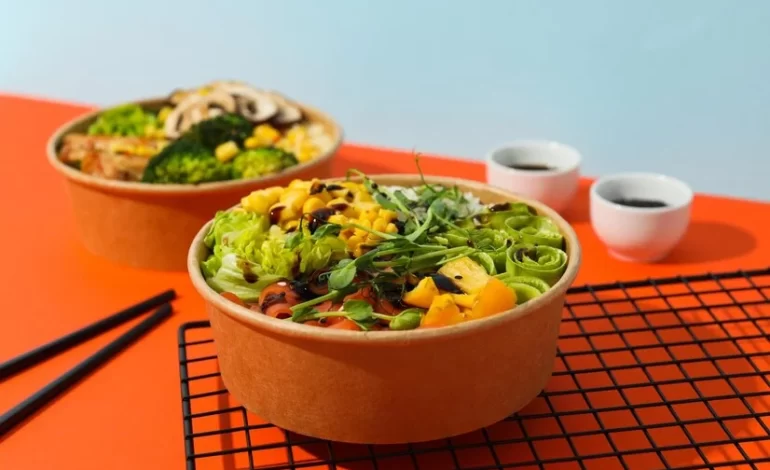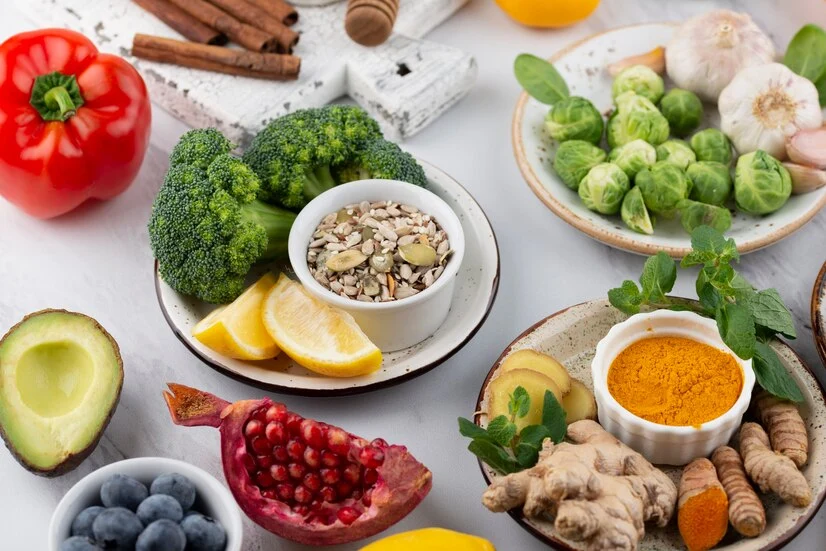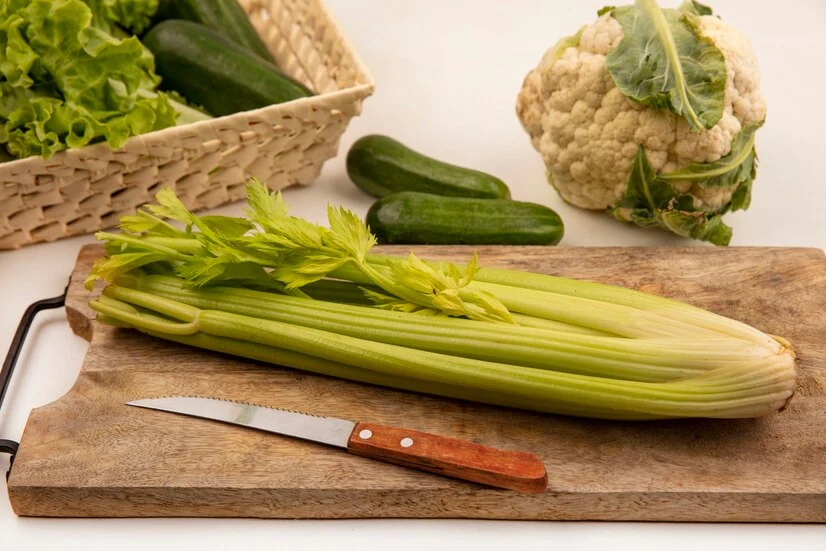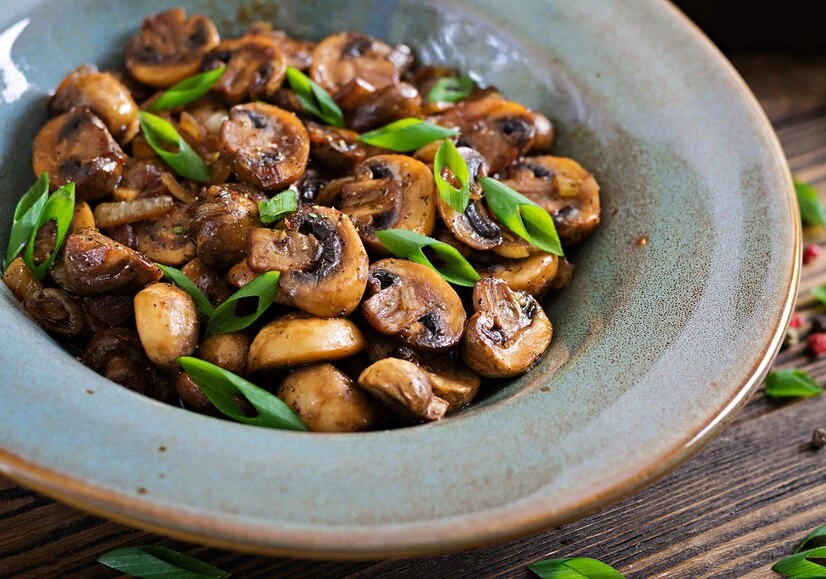
Have You Tried Asian Greens Recipes for Crisp and Crunchy Delights?
A Multifaceted Culinary Tapestry
Asian cuisine has transcended geographical boundaries to become a global culinary phenomenon. The intricate blend of flavors, the artful presentation, and the diverse array of ingredients have earned Asian Greens Recipes a dedicated following worldwide. From the aromatic spices of Indian curries to the delicate balance of Japanese sushi, the popularity of Asian cuisine lies in its ability to captivate the senses and transport diners to a world of gastronomic delight.
The Crucial Role of Diversity in Asian Vegetables
Beyond Flavor: A Nutritional Powerhouse
In the vibrant landscape of Asian cuisine, the spotlight often shines on the flavors and textures of diverse vegetables. These vegetables, particularly Asian greens, play a pivotal role in not only enhancing the taste of dishes but also in contributing essential nutrients to one’s diet. The importance of incorporating a variety of vegetables goes beyond culinary aesthetics; it is a cornerstone of promoting overall health and well-being.
Nutrient-rich palette on the Plate
Asian greens recipes, such as bok choy, gai lan, and tatsoi, bring a nutrient-rich palette to the plate. Packed with vitamins, minerals, and antioxidants, these greens offer a delicious and wholesome way to meet daily nutritional needs. Incorporating diverse vegetables ensures that the body receives a spectrum of nutrients, supporting functions ranging from immune health to maintaining healthy skin and bones.
Thesis Statement: Exploring the Fusion of Flavor and Nutrition in Asian Greens Recipes
In the global fascination with Asian cuisine and the imperative of diverse vegetable consumption, this blog sets out on a culinary journey. The mission is clear: to explore the world of Asian greens recipes. Beyond being a mere exploration of taste, this endeavor is an invitation to embrace the delightful fusion of flavor and nutrition. The forthcoming sections will unravel the benefits of Asian greens recipes, showcase different varieties, and guide you through the creation of a scrumptious and nutritious Asian greens recipe. It’s not just about cooking; it’s about crafting a culinary experience that nourishes both the body and the soul. Let the adventure begin!
Benefits of Asian Greens
Nutritional Value of Asian Greens
Rich in Vitamins and Minerals
Asian greens, the unsung heroes of the vegetable kingdom, boast an impressive nutritional profile. Bursting with essential vitamins such as A, C, and K, along with minerals like calcium and iron, these greens offer a potent dose of nutrients in every leaf. Incorporating Asian greens Recipes into your diet becomes a flavorful and efficient way to meet your daily vitamin and mineral requirements.
High Fiber Content
One of the standout features of Asian greens recipes is their high fiber content. Fiber is crucial for digestive health, promoting regular bowel movements and preventing constipation. The inclusion of fiber in your diet not only aids in digestion but also contributes to a feeling of fullness, supporting weight management and overall well-being.
Health Benefits of Asian Greens
Antioxidant Properties
Asian greens emerge as powerful defenders of health with their inherent antioxidant properties. Antioxidants play a pivotal role in neutralizing harmful free radicals in the body, protecting cells from oxidative stress. Including Asian greens in your meals becomes a proactive step in fortifying your body’s defense against oxidative damage and promoting long-term health.

Potential Anti-Inflammatory Effects
Research suggests that the consumption of Asian greens may have potential anti-inflammatory effects. Chronic inflammation is linked to various health issues, including heart disease and certain types of cancer. By regularly enjoying Asian greens Recipes in your diet, you not only tantalize your taste buds but also contribute to a diet that may help mitigate inflammation, fostering a healthier and more resilient body.
Types of Asian Greens
Bok Choy: The Versatile Green Marvel
Bok Choy, a staple in Asian cuisine, is a versatile and nutritious leafy green that adds a delightful crunch to your dishes.
Brief Description
Bok Choy, also known as Chinese cabbage, features tender white stalks and dark green leaves. Its mild, slightly sweet flavor makes it a favorite in stir-fries, soups, and salads.
Nutritional Profile
Rich in vitamins A, C, and K, as well as calcium and potassium, Bok Choy is a nutritional powerhouse. It’s low in calories but high in antioxidants, making it an excellent addition to a health-conscious diet.
Cooking Tips
To preserve its crisp texture and maximize flavor, consider quick stir-frying or sautéing Bok Choy. Add garlic and ginger for an extra flavor boost, creating a savory base for your Asian greens recipes.
Gai Lan (Chinese Broccoli): The Robust Green Delight
Gai Lan, also known as Chinese broccoli, is a robust and nutritious green vegetable with a unique flavor profile.
Introduction
With thick stalks and dark green leaves, Gai Lan is known for its slightly bitter taste and tender texture. It’s a popular choice in both traditional and modern Asian cuisines.
Health Benefits
Gai Lan is a rich source of vitamins A and C, providing immune-boosting benefits. Its high fiber content supports digestion, and the presence of antioxidants contributes to overall health.
Recipe Ideas
Incorporate Gai Lan into your Asian greens recipe by stir-frying with garlic and oyster sauce. This simple preparation enhances its natural flavors while maintaining the vegetable’s crispness.
Tatsoi: The Delicate Leafy Green
Tatsoi, a lesser-known Asian green, is a delicate and nutritious leafy green that deserves a place on your plate.
Overview
With spoon-shaped leaves and a mild, mustard-like flavor, Tatsoi adds a unique touch to salads, soups, and sautés. Its petite size and tender leaves make it a versatile ingredient.
Culinary Uses
Tatsoi is a great addition to salads or can be lightly sautéed for a quick and nutritious side dish. Its versatility makes it an excellent choice for experimenting with different cooking techniques.
Nutritional Highlights
Packed with vitamins A, C, and E, as well as folate and calcium, Tatsoi offers a spectrum of nutrients. Including Tatsoi in your Asian greens recipe not only elevates the flavor but also enhances the nutritional content of your meal.
Stir-Fried Bok Choy with Garlic and Ginger Recipe
Unlock the flavors of Asian greens with this delectable Stir-Fried Bok Choy recipe, where the crispiness of Bok Choy meets the aromatic dance of garlic and ginger.
Ingredients for Stir-Fried Bok Choy
Fresh Bok Choy
The star of the dish, fresh Bok Choy brings a delightful crunch and mild sweetness to the stir-fry. Choose vibrant, firm heads for the best texture and flavor.

Garlic and Ginger
Infuse the dish with layers of flavor by using fresh garlic and ginger. Mince them finely to release their aromatic essence during the cooking process.
Soy Sauce and Sesame Oil
Elevate the umami profile with soy sauce and sesame oil. The soy sauce adds depth, while the sesame oil imparts a nutty richness to the overall flavor.
Step-by-Step Cooking Instructions
Preparing the Bok Choy
Start by cleaning and separating the Bok Choy leaves. Trim the ends and slice the stalks into bite-sized pieces, keeping the leaves intact. This ensures even cooking and a pleasing mix of textures.
Sauteing Garlic and Ginger
In a wok or skillet, heat a small amount of sesame oil over medium-high heat. Add the minced garlic and ginger, stirring continuously to release their flavors. The kitchen will be filled with a delightful aroma.
Stir-Frying the Bok Choy
Introduce the prepared Bok Choy to the wok. Toss the greens in the fragrant garlic and ginger mixture, ensuring an even coating. Drizzle soy sauce over the greens and continue to stir-fry until the Bok Choy is crisp-tender, preserving its vibrant green color.
Serving Suggestions
Accompaniments
Serve this Stir-Fried Bok Choy as a side dish alongside steamed rice or noodles for a complete and satisfying meal. The savory-sweet flavors of the dish complement a variety of Asian-inspired main courses.
Presentation Tips
For an appealing presentation, arrange the Stir-Fried Bok Choy on a platter, garnishing it with additional fresh herbs or sesame seeds. The contrasting colors and textures will not only delight the palate but also the eyes.
Gai Lan and Shiitake Mushroom Stir-Fry Recipe
Embark on a culinary journey with the tantalizing fusion of Gai Lan and Shiitake mushrooms, creating a Stir-Fry that harmonizes the earthy richness of mushrooms with the vibrant crunch of Gai Lan.
Ingredients for Gai Lan and Shiitake Mushroom Stir-Fry
Gai Lan
Gai Lan, with its robust stalks and tender leaves, takes center stage, providing a slightly bitter yet delightful flavor to the stir-fry. Choose fresh Gai Lan for the best texture and taste.
Shiitake Mushrooms
Shiitake mushrooms, renowned for their umami-rich taste, complement the Gai Lan perfectly. Clean and slice these mushrooms to add a meaty and savory element to the dish.
Oyster Sauce and Rice Vinegar
The savory notes of oyster sauce combined with the tanginess of rice vinegar form the foundation of the flavorful sauce. This duo adds depth and complexity to the Stir-Fry.

Cooking Instructions for Gai Lan and Shiitake Mushroom Stir-Fry
Preparing Gai Lan and Mushrooms
Clean and trim the Gai Lan, cutting the stalks into bite-sized pieces and keeping the leaves intact. Slice the Shiitake mushrooms, discarding the tough stems. This preparation ensures even cooking and a delightful mix of textures.
Stir-Frying with Flavorful Sauce
In a hot wok or skillet, stir-fry the Gai Lan and Shiitake mushrooms together. Add the oyster sauce and rice vinegar mixture, coating the vegetables and mushrooms evenly. Stir-fry until the Gai Lan is vibrant and the mushrooms are tender, allowing the flavors to meld.
Variation Options and Serving Ideas
Explore Flavor Variations
Experiment with flavor variations by adding ingredients like garlic, ginger, or chili flakes for an extra kick. Customizing the sauce with a hint of soy sauce or a touch of honey can create a personalized twist to suit your taste preferences.
Serving Suggestions
Serve this Gai Lan and Shiitake Mushroom Stir-Fry over steamed rice or noodles for a wholesome and satisfying meal. Garnish with sesame seeds or chopped green onions for an added visual and flavor boost.
Tips for Cooking with Asian Greens
Unlock the full potential of Asian greens in your kitchen with these essential tips, ensuring a culinary experience that not only tantalizes the taste buds but also maximizes the nutritional benefits of these vibrant greens.
Washing and Prepping Asian Greens
Gentle Washing
Begin by gently washing Asian greens under cold running water. Their delicate leaves can trap dirt, so it’s crucial to rinse them thoroughly, ensuring a clean and fresh start to your culinary creation.
Trim with Care
Trim the ends of the greens and discard any wilted or discolored leaves. For stalked varieties like Bok Choy or Gai Lan, cut them into uniform pieces for even cooking. This meticulous prepping guarantees a visually appealing and well-cooked dish.
Choosing the Right Cooking Method
Stir-frying for Crisp Perfection
Stir-frying is the go-to method for Asian greens, preserving their vibrant colors and crisp texture. The high heat ensures quick cooking, maintaining the nutritional integrity of the greens while infusing them with flavorful sauces.
Steaming for Tender Delicacy
Steaming is an excellent option for more delicate greens like Tatsoi. This gentle cooking method retains their tenderness, allowing the natural flavors to shine. Steaming is also ideal for preserving the nutritional content of Asian greens.
Blanching for Vibrancy
Blanching briefly in boiling water followed by an ice bath is perfect for greens like Gai Lan. It helps retain their vibrant green color, providing a striking visual appeal to your Asian greens recipe.
Pairing with Complementary Flavors
The Perfect Harmony of Garlic and Ginger
Asian greens marry exceptionally well with aromatic ingredients like garlic and ginger. Whether stir-frying or sautéing, these two add depth and complexity, elevating the overall flavor profile of your dish.
Balancing with Soy Sauce and Sesame
Soy sauce and sesame oil are classic companions for Asian greens. The salty richness of soy sauce and the nutty undertones of sesame oil complement the natural flavors, creating a harmonious balance in your recipes.
Citrus Zest for a Refreshing Twist
Add a refreshing twist to your Asian greens by incorporating citrus zest, such as orange or lemon. The bright acidity cuts through the richness, providing a burst of freshness to your dish.
Conclusion
Delving into the realm of Asian greens recipes unveils a culinary adventure that not only tantalizes the taste buds but also nourishes the body. The rich diversity of flavors, textures, and nutritional benefits found in Asian greens such as Bok Choy, Gai Lan, and Tatsoi opens a door to a world of gastronomic delight. From the savory symphony of Stir-Fried Bok Choy with Garlic and Ginger to the earthy richness of Gai Lan and Shiitake Mushroom Stir-Fry, these recipes showcase the versatility of Asian greens. As we explore various cooking methods and flavor pairings, it becomes evident that crafting a delicious and nutritious Asian greens dish is an art accessible to every home cook. So, embrace the fusion of taste and health, and let the keyword “Asian Greens Recipe” guide you to a culinary journey full of vibrancy and wholesome goodness.
Frequently Asked Questions
What are some common Asian greens used in recipes?
Bok Choy, Gai Lan, and Tatsoi are popular choices known for their unique flavors and nutritional benefits.
How do I cook Asian greens to maintain their crisp texture?
Stir-frying is an ideal method, preserving the crunch while infusing the greens with flavorful sauces.
Can I substitute ingredients in an Asian greens recipe?
Absolutely! Experiment with variations, but ensure complementary flavors to maintain the dish’s authenticity.




